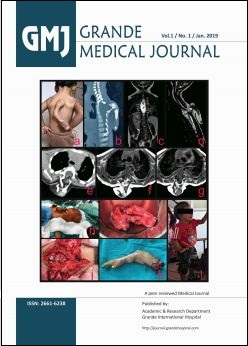Lateral lumbar interbody fusion (LLIF): Technique and outcomes
DOI:
https://doi.org/10.3126/gmj.v1i1.22399Keywords:
LLIFAbstract
Introduction: Historically, an interbody device (IBD) has consisted of morselized autograft1, structural autograft, structural allograft, stainless steel ball, threaded titanium cage, polyetheretherketone (PEEK) cage, and more recently 3D printed titanium cage with bioactive surface characteristics and bony ingrowth into IBD interstices. These IBD’s have been inserted through a variety of approaches, both by open technique and by minimally invasive surgical (MIS) technique. Traditionally, the most common procedures have been posterior lumbar interbody fusion (PLIF), transfacetal lumbar interbody fusion (TLIF), and anterior lumbar interbody fusion (ALIF). Obviously, both PLIF and TLIF are posterior approaches, and ALIF is an anterior approach. More recent approaches in the retroperitoneal space anteriorly are oblique lumbar interbody fusion (OLIF) anterior to the psoas muscle, and lateral lumbar interbody fusion (LLIF) which is a transpsoas procedure. LLIF is the subject of this manuscript. The LLIF technique utilizing K2M’s Ravine retractor system and K2M’s lateral IBD’s, Aleutian (PEEK) and Cascadia (3D printed titanium) will be described (K2M, Leesburg, VA USA). Bone graft substitute, iFactor (Cerapedics, Colorado USA), was used in all cases. No autograft was harvested from the iliac crest, but local morselized autograft was utilized if available. The clinical outcomes for LLIF using these implants and instruments will be reported.
Downloads
Downloads
Published
How to Cite
Issue
Section
License




